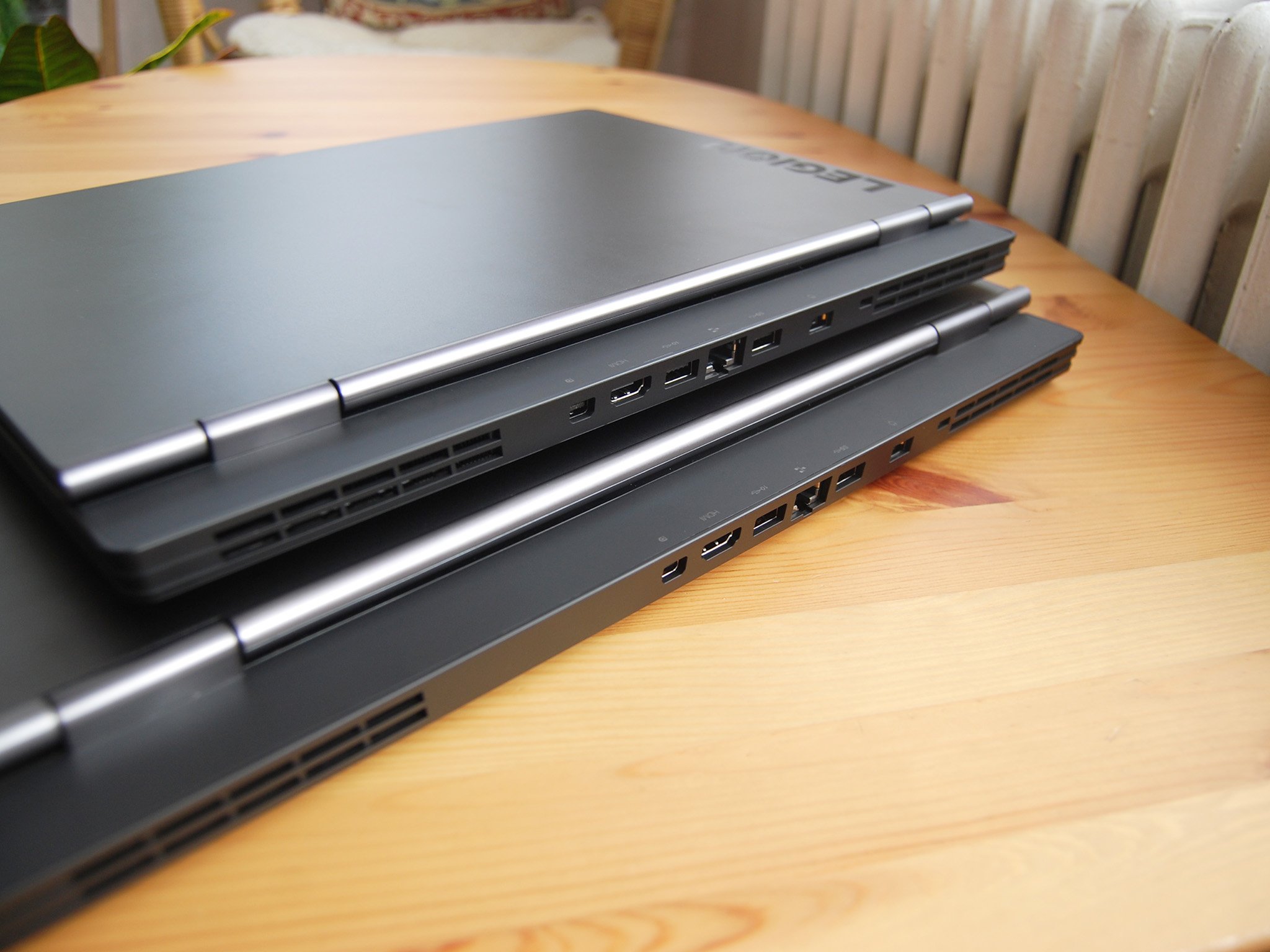Lenovo Legion Y740 15 vs. Y740 17: Which should you buy?
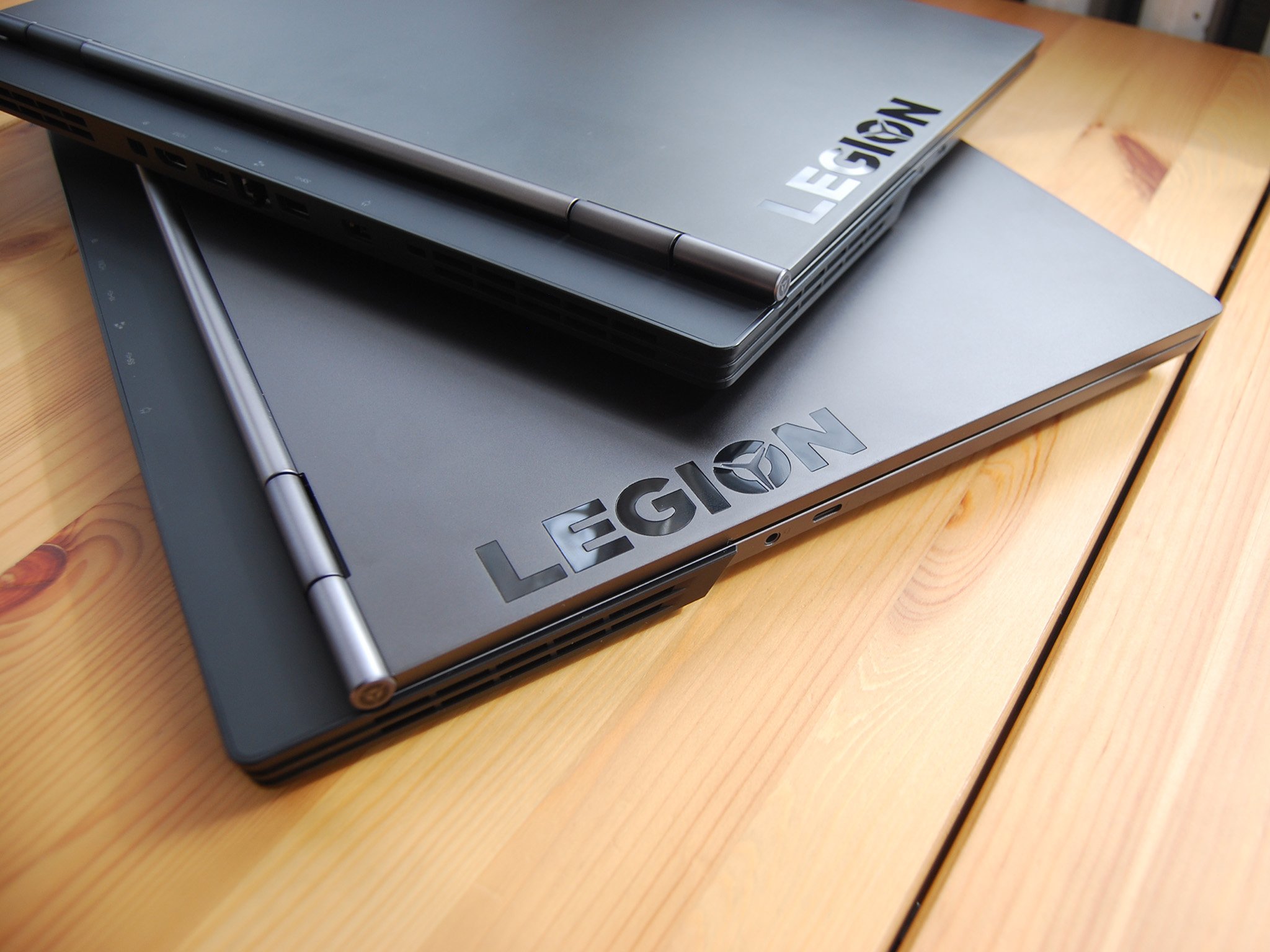

Thin bezel, strong performance
The smaller 15.3-inch Legion Y740 is a beast of a laptop, running cool under load and looking great while doing it. It might top out at a NVIDIA RTX 2070 Max-Q graphics card (GPU), which won't quite deliver the same performance as can be had in the 17.3-inch Y740, but it should still satisfy your portable gaming needs.
Pros
- Smaller, lighter build
- Thinner bezel
- Cool, quiet performance
- RAM and storage upgradeable
- RGB keyboard with macro keys
Cons
- Tops out at NVIDIA RTX 2070 Max-Q
- Smaller display
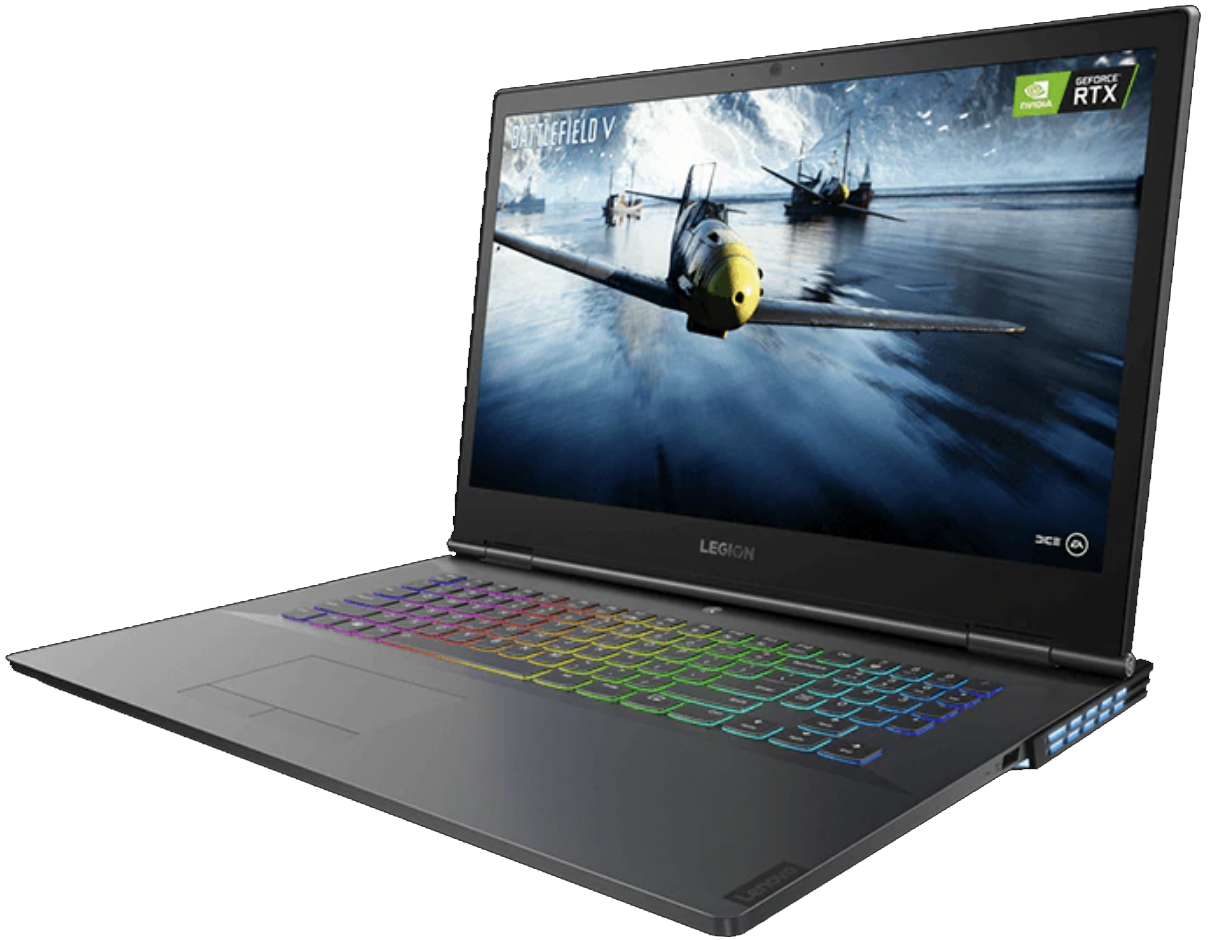
More room for more powerful hardware
The 17.3-inch Legion Y740 brings up to a NVIDIA RTX 2080 Max-Q GPU in its larger chassis, alongside a larger battery, larger display, and a keyboard with full number pad. If you want the biggest and baddest laptop Lenovo makes, this is it, but you might be able to save some money and get similar performance from the Y740 15.
Pros
- Larger 17-inch display
- NVIDIA RTX 2080 Max-Q available
- RAM and storage upgradeable
- RGB keyboard with numpad
- Larger battery
Cons
- Thicker bezel
- No keyboard macro keys
The 15.6-inch Legion Y740 is best suited for those who plan on frequently toting their laptop with them, as it's much more portable than the 17.3-inch version. It does, however, top out at a NVIDIA RTX 2070 Max-Q, and if you want the best performance possible, you'll have to go with the 17.3-inch Legion Y740, which has inside a NVIDIA RTX 2080 Max-Q. Let's take a closer look below at what sets these laptops apart.
Lenovo Legion Y740 15 vs. Y740 17 tech specs
| Header Cell - Column 0 | Lenovo Legion Y740 15 | Lenovo Legion Y740 17 |
|---|---|---|
| OS | Windows 10 Home | Windows 10 Home |
| Processor | 8th Gen Intel Core i7-8750H Six cores Up to 4.10 GHz | 8th Gen Intel Core i7-8750H Six cores Up to 4.10 GHz |
| RAM | Up to 32GB DDR4-2666MHz | Up to 32GB DDR4-2666MHz |
| Storage | Up to 512GB PCIe NVMe SSD Up to 1TB HDD | Up to 512GB PCIe NVMe SSD Up to 1TB HDD |
| Display size | 15.6 inches Non-touch | 17.3 inches Non-touch |
| Display resolution | 1,920 x 1,080 (FHD) 144Hz NVIDIA G-Sync | 1,920 x 1,080 (FHD) 144Hz NVIDIA G-Sync |
| Graphics | NVIDIA RTX 2070 Max-Q (8GB) NVIDIA RTX 2060 (6GB) | NVIDIA RTX 2080 Max-Q (8GB) NVIDIA RTX 2070 Max-Q (8GB) NVIDIA RTX 2060 (6GB) |
| Ports | Three USB-A 3.1 Mini DisplayPort 1.4 HDMI 2.0 RJ45 Ethernet Thunderbolt 3 3.5 mm headset jack | Three USB-A 3.1 Mini DisplayPort 1.4 HDMI 2.0 RJ45 Ethernet Thunderbolt 3 3.5 mm headset jack |
| Battery | 57Wh 230 W AC adapter | 76Wh 230 W AC adapter |
| Weight | From 5.1 pounds (2.2 kg) | From 6.3 pounds (2.9 kg) |
| Dimensions | 14.2 inches x 10.5 inches x 0.88 inches (361.42 mm x 267 mm x 22.45 mm) | 16.2 inches x 12 inches x 0.91 inches (412.6 mm x 304.9 mm x 23 mm) |
Similar design, different size
The 15- and 17-inch Legion Y740s understandably have a similar design. They both have a chassis made primarily of aluminum with a plastic rear portion for ports, bottom air intake, and rear and side exhaust, and really the only thing different at a glance is the footprint size and weight. The 15.6-inch model weighs in at about 5.1 pounds (2.2 kg) while the 17.3-inch model weighs in at about 6.3 pounds (2.9 kg), so if you're concerned with portability, the former laptop should be a better fit, especially when you factor in the size of the 230 W AC adapter.
Display hinges are set forward on the chassis of both models, and Lenovo reserves the resulting back ledge of the laptop for the majority of ports. On both laptops, you get Mini DisplayPort, HDMI, two USB-A 3.1, RJ45 Ethernet, and Lenovo's proprietary charging port on the back, while the left side has a single Thunderbolt 3 and a 3.5 mm headset jack and the right side has another USB-A 3.1. Even with a bunch of external accessories attached, there's not much crowding and cables can run away without causing clutter on a desk.
Both laptops have a bit of wedge shape towards the front that helps keep them looking thinner than they really are, and both have a Legion logo on the lid. The extra space in the 17-inch model's keyboard deck is capitalized on with a full number pad, though the 15-inch model has instead a column of macro keys to the left of the QWERTY deck that gives gamers some extra flexibility. The only issue with the latter setup is that the keyboard is pushed to the right, and you might find your hand rubbing on the touchpad when using the usual WASD keys for gaming.

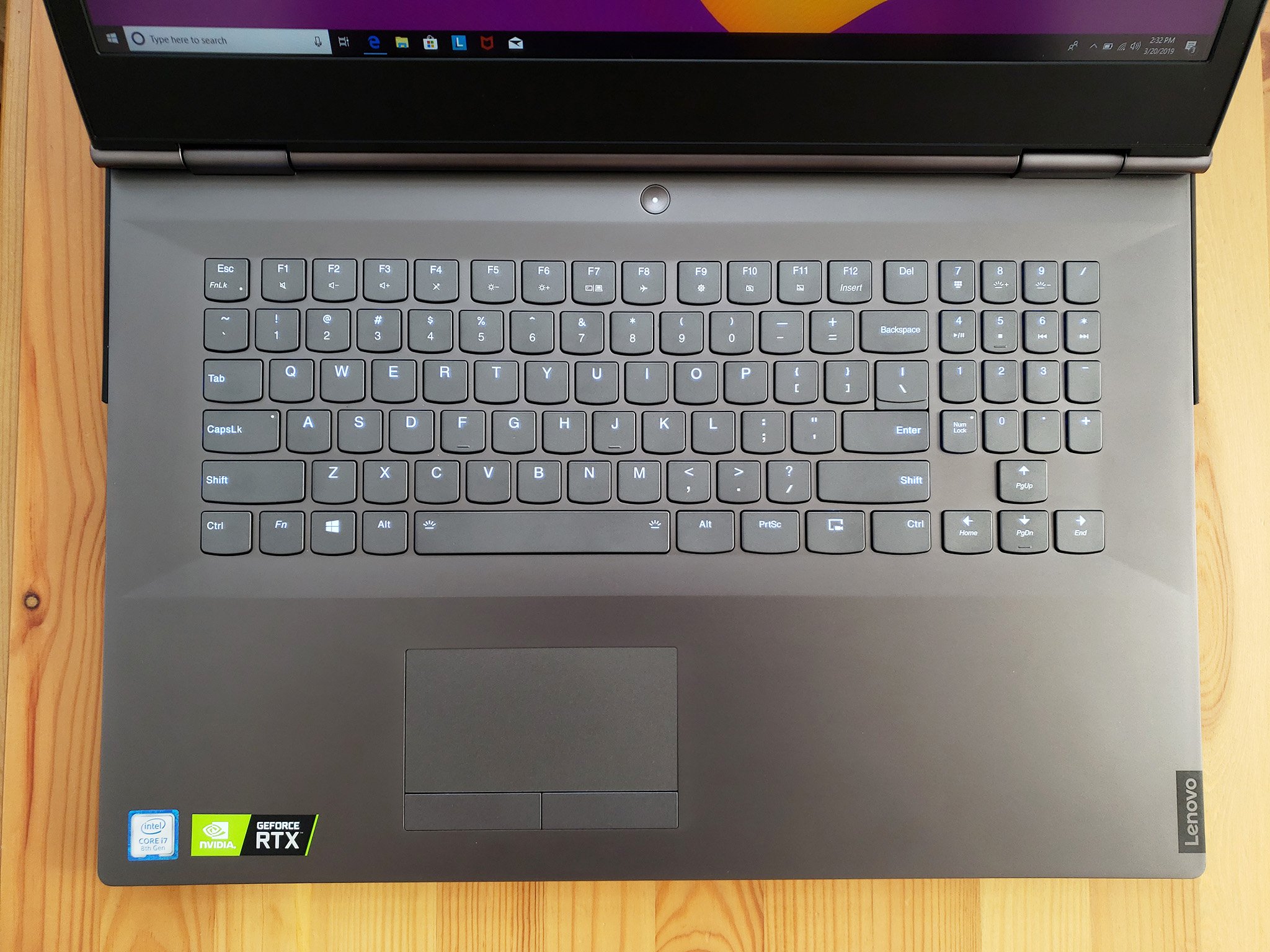
Neither laptop has a mechanical keyboard, though what's on offer is comfortable to use for extended periods of time. Both laptops come equipped with RGB lighting on all keys as well as the exhaust vents, which can be extensively customized with the included Corsair iCue app. Touchpads on both models are underwhelming. They're relatively small, and the physical buttons along the bottom can be touchy. You often have to click exactly in the middle of the buttons to get a response, but I think Lenovo understands that most people connect an external gaming mouse when it comes time to have some fun.
Audio systems are also the same on both laptops. There are two down-firing speakers near the front — actually installed on the tapering portion — and an extra subwoofer near the back for a bit of extra oomph. Sound quality isn't bad on either laptop, but because everything is firing down, no one will blame you if you plug in a gaming headset.
Large displays for gaming
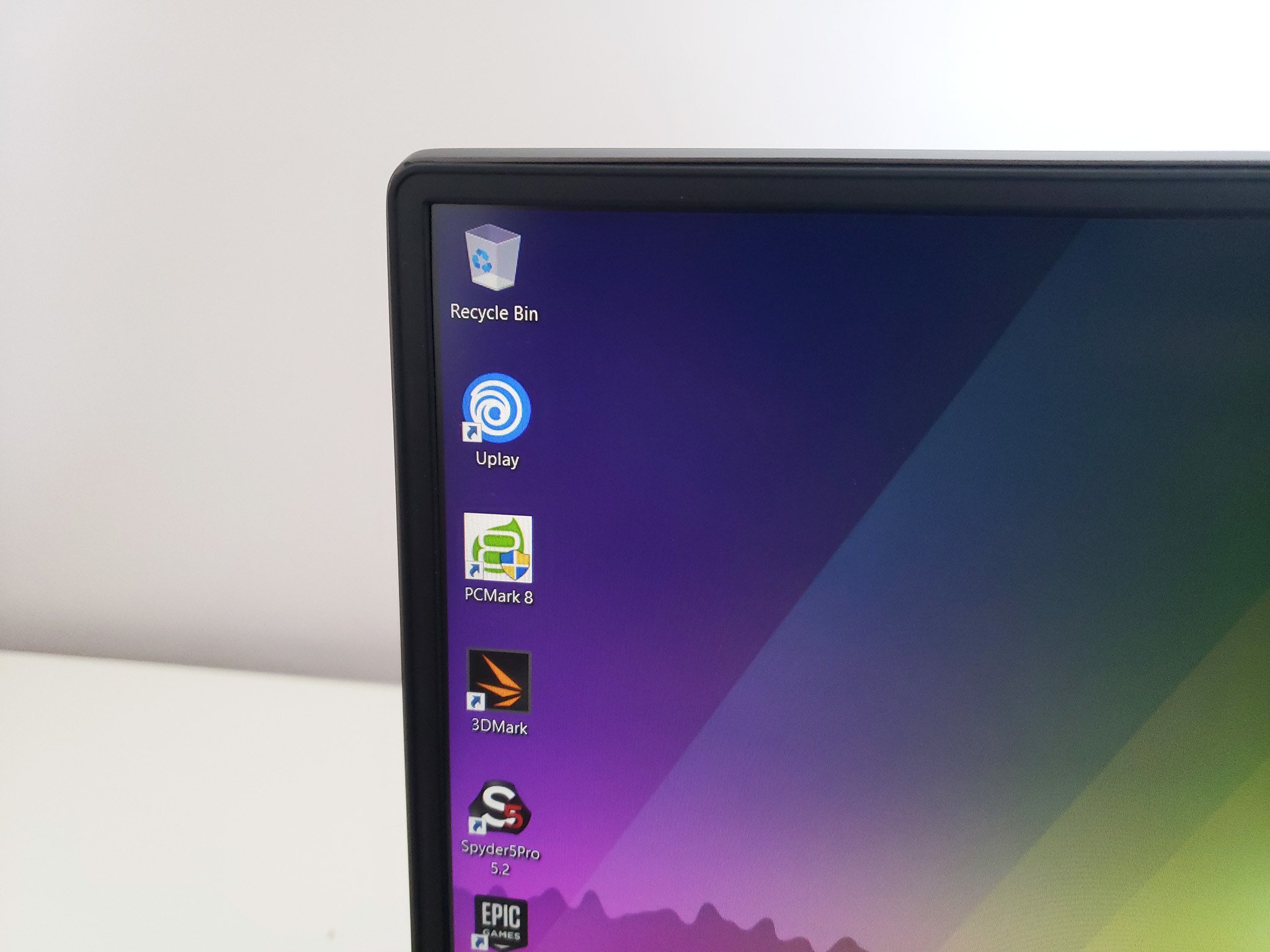
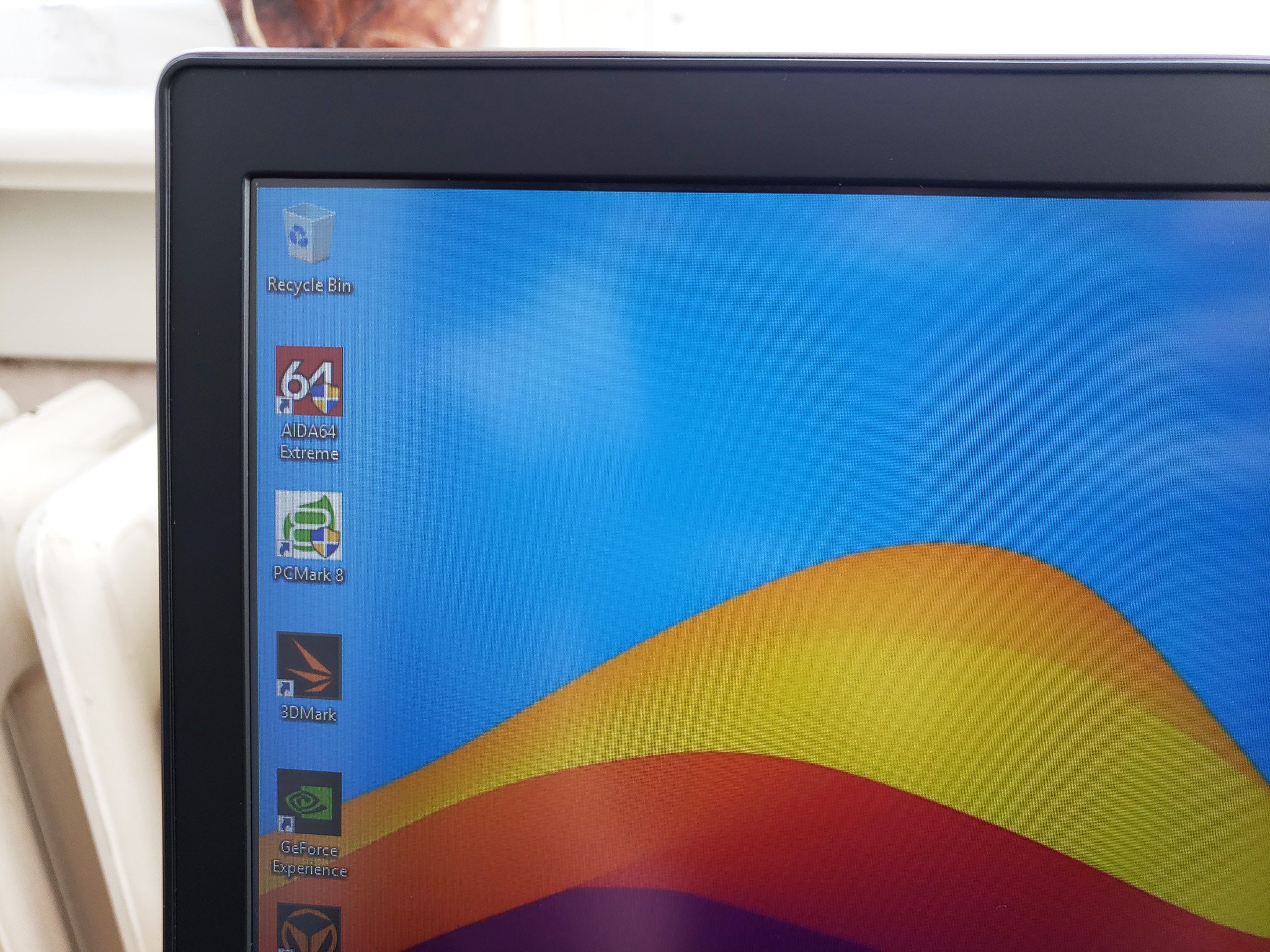
The biggest difference between these two laptops, other than the hardware available, is the size of the display. With the Y740 17, you get a 17.3-inch display with FHD resolution, 144 Hz refresh rate, and NVIDIA G-Sync compatibility for tear-free visuals and a smoother overall experience. The trade-off is that the larger laptop has a much thicker bezel around the display, and there seems to have been a bit of light bleed along the edges.
All the latest news, reviews, and guides for Windows and Xbox diehards.
The 15.6-inch Legion Y740 has a smaller display, but it has a thinner bezel for a more modern look. It also has a 144 Hz refresh rate and maxes out at 1080p, and it's compatible with NVIDIA G-Sync. Testing color reproduction, I got back 98 percent sRGB and 75 percent AdobeRGB, both excellent results that contribute to an overall colorful picture. The 17-inch Y740 hit 97 percent sRGB and 75 percent AdobeRGB, which essentially gives you the same quality picture.
Choosing between displays really comes down to whether or not you plan on frequently hooking up an external display, and how often you'll be taking the laptop on the road. The smaller display is easier to slip into a backpack, though you'll probably be more inclined to use a larger external monitor, while the larger display is more cumbersome but gives you a lot more real estate to work with. There's also the matter of bezel, and if thick borders irk you, the 15-inch model is probably the better pick.
Performance, battery life, and heat
The Legion Y740 models we reviewed had different GPUs, though the Intel Core i7-8750H processor (CPU), 16GB DDR4 RAM, and 1 TB hard-disk drive (HDD) and 256 GB PCIe solid-state drive (SSD) were the same. The 15-inch Y740 comes with either a NVIDIA RTX 2060 or RTX 2070 Max-Q (which we reviewed), while the 17-inch model comes with an additional option for an RTX 2080 Max-Q (which is what we reviewed).
Different GPUs understandably bring different performance, and you can only get the RTX 2080 Max-Q with the 17-inch Legion Y740. If that's all you're focused on, the decision should be easy, though the price to performance ratio may cause pause. The 17-inch model with RTX 2080 we reviewed costs about $1,856, while the 15-inch model with RTX 2070 we reviewed costs about $1,536. Performance is close between these two laptops in all regards, and we found the 15-inch model to run cooler and quieter when under load.
3DMark
Time Spy (Higher is better)
| PC | GPU | Score |
|---|---|---|
| Lenovo Legion Y740 15 | RTX 2070 Max-Q | 6,406 |
| Lenovo Legion Y740 17 | RTX 2080 Max-Q | 7,128 |
3DMark
Fire Strike (Higher is better)
| PC | GPU | Score |
|---|---|---|
| Lenovo Legion Y740 15 | RTX 2070 Max-Q | 14,669 |
| Lenovo Legion Y740 17 | RTX 2080 Max-Q | 16,303 |
VRMark
Orange Room (Higher is better)
| PC | GPU | Score |
|---|---|---|
| Lenovo Legion Y740 15 | RTX 2070 Max-Q | 8,537 |
| Lenovo Legion Y740 17 | RTX 2080 Max-Q | 8,885 |
Overall performance numbers are close, and you might have a tough time deciding whether or not $300 is worth the edge the RTX 2080 brings.
For an idea of how well the laptops perform when running actual games, we tested with Metro Exodus and Tom Clancy's The Division 2. Metro Exodus averaged 105.6 FPS (60 minimum and 170 maximum) on High settings without ray tracing or DLSS enabled. The Y740 17 with RTX 2080 Max-Q GPU averaged 125.6 FPS. With ray tracing and DLSS enabled, Metro Exodus averaged 66.4 FPS (55 minimum and 85 maximum). The Y740 17 averaged 63.2 FPS, which seems to mean that the RTX 2070 better handles the extra burden.
Tom Clancy's The Division 2 on High preset averaged 73.4 FPS (34 minimum and 84 maximum). The Y740 17 averaged 89.4 FPS. From these results, it's clear that the 15-inch Y740 is going to deliver a robust gaming experience with high framerates, though you won't be playing on Ultra without seeing a significant dip in performance.
As for general performance, both laptops can handle their own thanks to a beefy hexa-core Intel Core i7 CPU and 16GB of dual-channel DDR4 RAM. Battery life in both laptops is about the same despite the differing battery sizes, no doubt thanks to the larger display and beefier GPU in the Y740 17. You can expect less than an hour from a full charge when gaming, with about two hours of regular usage when not under load.
CPU
Geekbench 4.0 Benchmarks (Higher is better)
| Device | CPU | Single core | Multi core |
|---|---|---|---|
| Lenovo Legion Y740 15 | i7-8750H | 4,975 | 22,294 |
| Lenovo Legion Y740 17 | i7-8750H | 5,067 | 22,578 |
PCMark
PCMark Home Conventional 3.0
| Device | Score |
|---|---|
| Lenovo Legion Y740 15 | 4,789 |
| Lenovo Legion Y740 17 | 5,102 |
SSD
CrystalDiskMark (Higher is better)
| Device | Read | Write |
|---|---|---|
| Lenovo Legion Y740 15 | 3,395.1 MB/s | 1,549.7 MB/s |
| Lenovo Legion Y740 17 | 3,356.5 MB/s | 1,388.1 MB/s |
Both laptops come with a speedy Samsung PM981 PCIe SSD, while the 1 TB HDD is much slower.
To keep these laptops relevant longer, you can upgrade or replace the speedy SSD, slower HDD, and dual-channel DDR4 RAM, all for which we've created guides to help you with the process.
Lenovo Legion Y740 15 is more portable and runs cooler
The Legion Y740 15 might not have the same RTX 2080 Max-Q option, but the RTX 2070 Max-Q can hold its own and will deliver a stellar gaming experience. You get a smaller, lighter chassis with an RGB keyboard complete with column of extra macro keys, the same selection of ports, and a 1080p display with 144 Hz refresh rate and NVIDIA G-Sync compatibility. If you don't mind not having the best GPU and don't mind the smaller size, the 15-inch Y740 makes a great choice.

Smaller but still mighty
An RTX 2070 Max-Q GPU and hexa-core Intel Core i7-8750H CPU doesn't keep this gaming laptop from running cool. It's all wrapped up in an aluminum chassis that is priced competitively. If you don't need an RTX 2080 and don't mind the smaller screen, the Legion Y740 15 is likely the better pick.
The Legion Y740 17 is bigger and brings more power
The 17-inch Legion Y740 has the option for a NVIDIA RTX 2080 Max-Q GPU, it has an RGB keyboard with full number pad, and it has more display real estate if you don't plan on plugging in an external monitor. It's not as portable as the 15-inch model and it does seem to run louder and hotter, but for those who want the best performance possible, the larger laptop should be first pick.

Cale Hunt brings to Windows Central more than nine years of experience writing about laptops, PCs, accessories, games, and beyond. If it runs Windows or in some way complements the hardware, there’s a good chance he knows about it, has written about it, or is already busy testing it.
